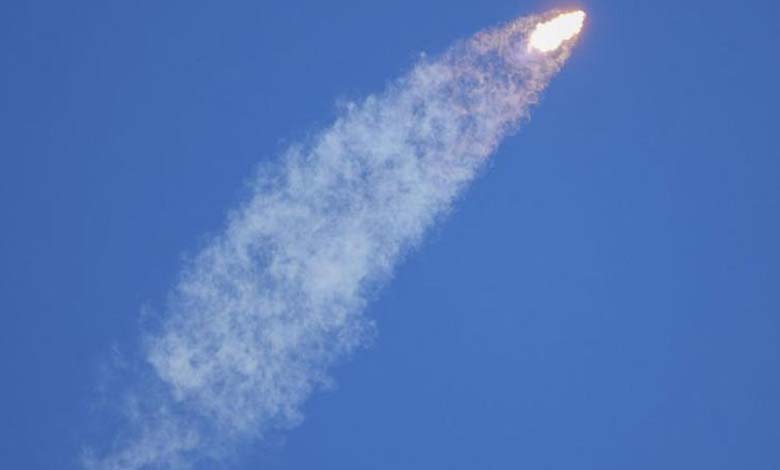Launch of satellite to study causes of fires and hurricanes on earth

A new American satellite was launched on Tuesday from Florida, expected to significantly improve the ability to predict solar storms that could disrupt power and communication networks worldwide.
The satellite, weighing about three tons and the size of a small school bus, will also enable the monitoring of hurricanes and fires on Earth through the 2030s.
The satellite was carried into space by a “Falcon Heavy” rocket from SpaceX at Cape Canaveral.
The satellite, named “GOES-U,” is the last of a series of four satellites resulting from a collaboration between NASA and the National Oceanic and Atmospheric Administration (NOAA).
Pam Sullivan, a NOAA official, described these four satellites as “an essential tool for protecting the United States and a billion people living and working in the Americas” during a press conference.
However, “GOES-U” is the first of the four satellites to carry a coronagraph called “CCOR-1,” which blocks the solar disk, similar to an eclipse, allowing observation of the solar corona.
The NOAA’s space weather monitoring official explained that “large solar explosions called coronal mass ejections” originate from this outer layer and “can project billions of tons of material towards Earth at speeds of millions of kilometers per hour.”
These materials can disrupt satellites, power installations, and aviation navigation systems (or GPS), and determining when these ejections will occur allows for one to four days of preparation.
A level five geomagnetic storm, the highest level, hit Earth in May for the first time in two decades, creating a spectacular aurora borealis around the world.
Space Weather Monitoring
The space weather monitoring official stated that the new coronagraph would have provided better data from the beginning about this storm, in terms of speed, direction, and more.
He noted that no major malfunctions were recorded during the geomagnetic storm, but some farmers “could not plant their crops due to a GPS malfunction on which their equipment depends.”
Thanks to the new instrument, the United States will be able to monitor the solar corona almost continuously for the first time, with eclipse-like images every 30 minutes.
He asserted that the new instrument “will change the game” and “open a new chapter in space weather monitoring.”












